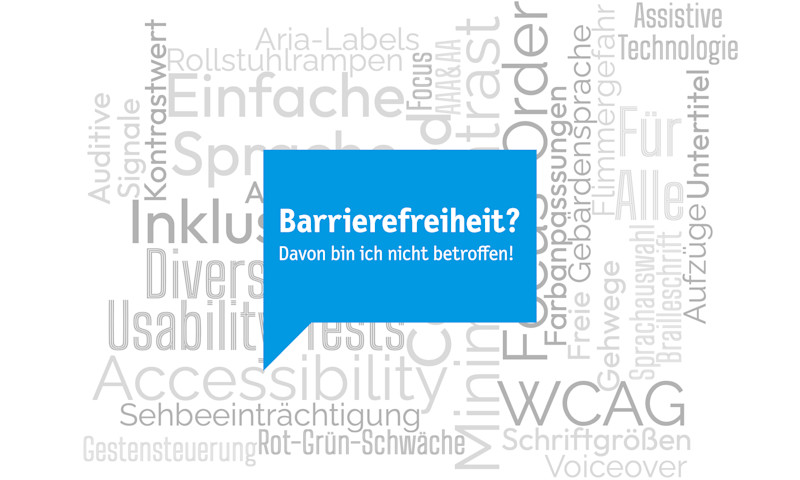Accessible design is for everyone

In May, I visited the conference Kollisionsabfrage — Barrierefreiheit im Gaming of Stiftung Digitale Spielekultur. People without disabilities often have the assumption: “Accessibility? I’m not affected by that.” The panel discussion, which can be viewed for free on YouTube, revealed a more nuanced view on the topic. Many aren’t even aware of all the things that fall under accessible design.
Barriers in (digital) everyday life
Accessible design for digital products goes beyond making sure a chosen font is easy to read, setting the right contrast levels, or supporting screen readers and alternative text for images - although it’s a good start, of course. An example: Have you ever watched a video and caught yourself thinking, “This person is mumbling quite a bit. How do I turn on subtitles on this?” The disappointment is all the greater when the site hosting the video doesn’t offer subtitles. Thinking one step further, the video may have subtitles, but they are so small and illegible that you’re left sorely missing the option to adapt them individually. A different font color or backdrop makes the text viable for various perceptions of color. That, too, is part of accessible design.
According to current data from the German government, around 9% of Germans live with disabilities; it’s safe to assume the categories used to determine that can’t fully represent all physical and mental handicaps. Especially in the digital realm, existing barriers are tied to many other factors: Personal experience with the use of digital media and the ability to read and understand English and German are just the tip of the iceberg. The goal is therefore to design solutions so that everyone can use them without problems and to prevent (intentional or unintentional) exclusion.
What is accessible design?
Designing with everyone is not a new endeavor. Clever minds from involved communities have already created guidelines for accessible design, most famously the Web Content Accessibility Guidelines (WCAG) 2.0. At currently about 70 entries, they are intended to improve the accessibility of digital products and provide developers and designers like me with an overview over methods and best practices.
More generally, user-centered design lays the ideal groundwork for applications that are as accessible as possible. Interviews with diverse user groups and frequent user testing for each iteration highlight and document previously invisible barriers, so we can better understand the context of software and processes. This is then taken into account when designing new solutions, removing those barriers one by one.
Accessible design is everyone’s business because, in the end, everyone stands to benefit from good design.

Contact
14482 Potsdam
potsdam@d-labs.com
10245 Berlin
berlin@d-labs.com
70173 Stuttgart
stuttgart@d-labs.com
